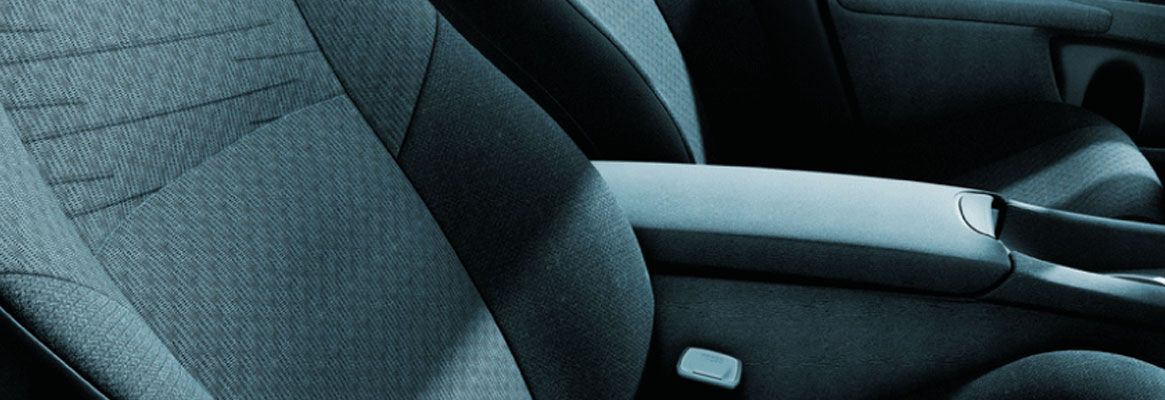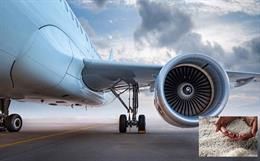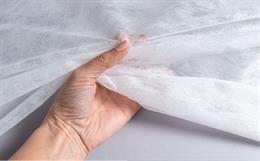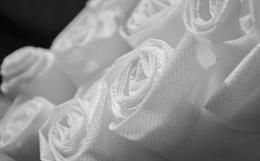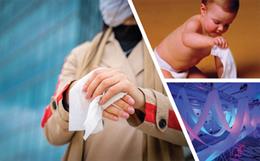Textiles are no more limited for use as apparelsclothing is just are but not the only purpose of textiles with the rapidchanges in the social economic structure of our society. Many efforts are madeto some and protect human life. Textiles are used in a number of little known forms and lesstransparent technical areas. Automotive textiles is one of them. It isestimated that an average family car contains about 12-14kg of textiles. Thebiggest car producing region is Western Europe, which consumes 1, 50,000 tonsper annum of textile for the automotive industry. The second and third largestmarkets for automotive textiles are USA and Japan. Two-thirdof textile are used for interior trim, that is, seat covers, roof, door liners,and carpets. Remainder goes to the other parts of the automotives. The worldbiggest nonwovens manufacturer estimates 42% of its sales tied to theautomotive sector.
The break down of major nonwovens usage includes areas suchas:
- Carpet 43%
- Headliner 6%
- Trunk 13%
- Hood liner 10%
- Insulation 17%
- Door panels 1%
- Seating 6%
- Package tray 3%
- Other miscellaneous areas 1%
Upholstery applications
The following are the upholstery applications
- Auto floor mats
- Automotive carpeting
- Automotive seating
- Seat covers
- Seat belts
- Air bags
- Steering wheel covers
- Automotive headliners
- Auto trim/supported PVC
- Auto trim/ leather
- Auto trim/ other automotive upholstery
- Car covers.
Further application of automotive fabrics
- Listings
- Insulator pads
- Map pocket line
- Tie downs
Need for upholstery
- Improving cost-effectiveness
- Working with contours
- Easily customized
- Attractive
- Durable
- Strength and weight
- Flame resistance
- Abrasion resistance
Types of fabric used
- Nonwovens fabrics
- Composite fabrics
- Coating fabrics
- Foam fabrics
- Upholstery , trimming fabrics
- Filter fabric
- Belt fabric
Use of natural fiber:
The major application of natural fiber reinforced composites
is the automotive industry. Use of this fiber had risen to about 28,000 tons in
the year 2000. An average of 5 to 10 kg of natural fiber is incorporated in
every European passenger car with interior parts. The use of reclaimed fibers
for upholstery filling material came along with the advent of the automobiles.
Reclaimed cotton fibers are still used today in combination with bonding powder
and bonding agents as self supporting moldings. Interior trim components are
made of recycled carpet fibers and bulky seat upholstery nonwovens as a
polyurethane substitute.
Essential properties required for automotive textiles
- Optimum weight
- High breaking strength
- Tear strength
- Adhesion
- Optimum porosity
- Less flex cracking
- Oil resistance
- Dimensional stability
- Water resistance
- Water proofing
- Colour fastness to light
Upholstery
Upholstery is the work of providing furniture, especially seats, with padding, springs, webbing, and fabric or leather covers. The word "upholstery" comes from the Middle English words up and Holden, meaning to hold up. The term is applied to domestic furniture and also to applications in automobiles.
Seat fabrics:
Over 90% of all fabric coverings are in polyester because
only this fibre combines the requirements of high performance with reasonable
cost. Polyester is more resistant to the particular wavelengths of UV light
which penetrate the glass windows of a car. Automotive seat fabric is almost
invariably a tri-laminate polyester is used on 90% of all car seats. Wool,
wool blends, leather and man-made leather are also used. Tri-laminate can be as:
- Polyester fabric
- Polyurethane foam
- Nylon/polyester scrim backing
More than 90% of all car seat fabric in the world is polyester, because only polyester has the required standard of high abrasion, resistance combined with UV and light resistance. The laminate provides a soft touch, prevents creasing or bagging over many years of use and also gives deep attractive sew lines. The scrim backing helps control strechability of knitted fabrics, helps seam strength and acts as a slide aid during sewing and making up. Leather and man-made leather are also foam backed with a scrim slide aid. Exact specification of cover components depends on where in the car the laminate will be used, that is, seat centre panel, bolster, or back.
Flat nonwovens for upholstery side parts, covers and ABC parts are not subjected to long-term pressure and deformation forces. For this reason, the nonwovens construction is to be made of a series mixture of different, but type-specific matrix fiber with a share of cutting and breaking waste.
Vertical nonwovens criteria that are much more stringent apply for nonwovens, which are solely for seat back filling. Special matrix fibre combinations are used to achieve the specified values. Grielene KE 150 co-polyester fibre was specially developed for the lower temperature range of automobile application.
Seat covering materials:
Car seats and other parts of the car interior are covered with fabric, real leather, and artificial leathers and also polymer foils. The main durability requirement of car seat covering material, i.e. resistance to abrasion, light and UV radiation, must be met. The material must still be in almost first class condition after two years use, so that the car will have a good resale value, and must last the life of the car, which may be as much as 15 years or more. Conditions inside a car vary from below 0 degree to well over 120degree C, depending upon where in the world it is sold. In addition to the extremes of temperature, the relative humidity of the closed confined area inside the car could vary from 0 to 100% continually in daily cycles. All materials used as seat coverings must be able to withstand these conditions, in addition to being sat upon for many years. When synthetic fibers were first introduced into car interiors, the highly demanding conditions had not been recognized nor had realistic test methods have been developed. In addition at about the same time (early 1970s), the oil crises demanded that the cars be more aerodynamic.
Modern cars are more aerodynamic with sloping windscreens. This results in a higher surface area composed of glass which leads to hotter car interiors because of the GREEN HOUSE effect. The car interior fabrics must stand up to a daily cycle of temperature changes from 130 degree C or more in hot tropical sunshine to perhaps below freezing at night. In the confined space of the car interior, the relative humidity will also vary widely. Polyester is now used for over 90% of fabric car seats because it alone has the required standard of UV degradation and abrasion resistance combined with economical cost.
The materials which are used for seat making is as follows
- Alternatives for seat cover laminate foam
- Alternatives for seat squab and cushion foam
- Sewing threads
- Kaptex
- Natural leather
- Man-made leather and suede
- Flocked fabrics
- Water vapor permeability (breath ability) of some car seat materials
|
Materials |
Weight (g/m2) |
Thickness (mm) |
Porosity |
Water vapor permeability (g/m2 24h) |
|
|
|
|
|
LDF(21d C) HDF(34.5Dc) |
|
Seat cover material |
|
|
|
|
|
Polyester woven fabric |
297 |
1.44 |
4.0 |
628 3799 |
|
Polyurethane foam |
295 |
8.53 |
14.0 |
491 2336 |
|
Tri-laminate (include scrim) |
648 |
9.42 |
3.0 |
472 2256 |
|
Polyester knitted fabric |
236 |
1.39 |
26.0 |
659 3788 |
|
Polyurethane foam |
180 |
4.07 |
8.0 |
536 2941 |
|
Tri-laminate (include scrim) |
455 |
4.99 |
6.0 |
540 2689 |
Coating of car seat fabric
Woven car seat fabric is sometimes back coated to increase the abrasion resistance and to remove the FR properties of the whole tri-laminate. The back coating resin can be acrylic, polyurethane or SBR based and can be coated on, knife over air as a straight resin or knife over roller or table as a foamed resin. Add on vary from about 10 to 60gm square or more, but the tendency is to put on as little as possible for reasons of cost and also so that the seat cover laminate is as light as possible. Woven velvet fabric must be back coated to lock in the pile. This can be carried by direct knife coating using either thickened or foamed resin or by a back-licking process using a resin of relatively low viscosity. Occasionally, seat fabric is forth coated on to the face to improve abrasion resistance. This process is more of a finishing treatment, because the coating is not visible and merely coats the individual threads without forming a film. Great care is needed in selecting resins or any finish to be applied to the surface of a car seat fabric because of the very demanding conditions it will have to withstand, i.e. high prolonged temperatures, varying relative humidity, and abrasion by car occupants clothes which may be wet or damp.
Lamination of car seat fabric
Car seat fabric is generally laminated to polyurethane foam by flame lamination, which is a quick, economical way of producing the triple laminate in a single process. A gas flame directly on to the surface of moving polyurethane foam under controlled conditions. This process melts the foam surface, and the molten foam is immediately covered with one of the fabrics to which it is being laminated. The same process takes place on the other side of the foam, and thus three substrates are fed into the machine and a single product emerges. For the fabric to be made up into car seat covers, the tri-laminate must be dimensionally stable without any curl and must lie flat on the table for panel cutting. This is not easy because all three materials are capable of stretching during lamination, especially the foam and scrim fabric. Handling of the materials, which must be uniform in their properties, needs to be carried out with extreme care and the lamination machine must be designed to do this at commercial speeds of up to 30m per min and higher.
The modern global automotive industry is so competitive that only the absolute minimum amount of foam thickness may be lost during the lamination process for the operation to be commercially feasible. Thickness is lost by a combination of foam burnt off and foam compressed during the nipping process in lamination. Foam density can be anything from 28km to about 70km depending on the end use required. The formation of automotive upholstery involves the amalgamation of three layers, namely, face fabric, foam and backing material. Usually underside of the assembly is fitted with knitted, nonwovens, or film backing, to impact dimensional stability and prevent excessive foam wear. Foam lamination is a quick economical process whereby all three components are fed into the laminator and the triple laminate emerges at speed up to and exceeding 25-40m/min.
Other seat coverings:
Until the late 1970s, most car seats were covered in leather, or leather cloths produced from PVC coated fabric. Both straight PVC and blown PVC varieties were used, the latter having a softer touch. However, these coated fabrics did not breath and were uncomfortable to sit upon, especially in hot weather. Attempts were made to improve this by producing a tape yarn by slitting PVC into thin strips and weaving it. Natural leather has always been used for car upholstery and is still regarded as the ultimate in luxury. Even leather is usually laminated to polyurethane foam to produce a soft touch to the material, and there is usually a fabric scrim on the back to aid processing. Natural leather is sometimes lacquered with a polyurethane resin to improve abrasion resistance, but this reduces breath ability of the leather.
Methods of seat construction:
The traditional method of seat making involves cutting and sewing of panels of the seat cover laminate (face fabric/foam/scrim) into a cover, which is then pulled over the squab (seat back) and cushion (seat bottom), and then fixed in placing using a variety of clips and fastenings. This process is both time-consuming and cumbersome, and because it includes considerable human element. Three-dimensional knitting of the seat cover is an option which so far appears to have had only limited usage.
- Foam in place
- Direct joining techniques
- Hook-and-loop fastenings
- Tunnel tie
- 3-d knitting or car seat covers
Machinery Used:
- Unconventional Spinning Machinery
- DREF (draw frame sliver)
- Warp spinning
- Weaving Machinery
- Rapier weaving
- Three dimensional (3d) weaving
- Knitting Machinery
- Circular knitting
- Flat knitting
- Braiding machinery
Latest technology
One of the latest technologies in circular knitting is the use of spacer fabrics in car seat coverings. A three dimensional sandwich fabric is constructed of two layers of fabric with connecting yarns spaced at approximately 5-6mm. seating comfort and climate closely correlated with the structure of the vehicle seat and the degree of air circulation. Tests using circular knitted spacer fabrics demonstrate that the air circulation afforded by this type of fabric is many times higher than that with laminated materials currently used.
Market Size
Global consumption of technical textile and nonwovens in mobiltech - textile used in transportation is forecast to reach 3.34 million tones by 2010. Already, such materials are estimated to account for 23% of the total technical textile market. In Europe alone the production of automotive textiles is forecast to grow from 265,000 tones in 2003 valued at US$1.08billion to 302,400tonnes in 2008 valued at US$1.18billion. Areas where textiles are used in motor vehicles include:
- Seat covers
- Floor coverings
- Headliners
- Seat belts etc
And with the increasing amount of time the driver spends inside the car, advances are being made into transforming the cabin into a living room where comfort and wellbeing are key feature. To achieve this new textile materials have been developed that offer improved characteristics and additional functions, such as temperature dependent air permeability, antibacterial effects, reflectivity, luminosity, high heat capacity and micro encapsulation effects. As a result of increasing demand for comfort and improved safety, the total amount of textiles used in a typical mid-range vehicle is forecast to grow from 20kg in 2000 to 35kg in2020. At the same, the total weight of a comparably equipped motor vehicle is predicted to decline by 250kg 17% - on average by2010, which will help in reducing transportation costs. This will largely be achieved by substituting conventional materials with fibrous material, such as fiber-reinforced plastics made with carbon fibres, glass fibers and natural fibers other than wood and cotton.
(kg) |
2000 |
2010 |
2020 |
|
Products and applications as in2000 |
20 |
14 |
10 |
|
New products for known applications |
- |
9 |
15 |
|
New products for new applications |
- |
3 |
10 |
|
Total |
20 |
26 |
35 |
Textile usage in a typical mid-range car, 2000-2010
Polyester (PET) has the largest fiber share of the
automotive textile market by far, accounting for more than 41% of the market in
2002. However, this proportion is set to decline over the next few years as a
result of higher demand for alternative fibers, such as polyamide (PA), polypropylene (PP), viscose (rayon) and Aramid. PA is expected to increase its market share from
27%in 2002 to 29%in 2008.
|
Application |
Weight(kg) |
|
Carpets, interiors |
4.5 |
|
Upholstery |
3.5 |
|
Belts, tubes |
1.6 |
|
Tyre cord |
1.5 |
|
Seat belts |
1.9 |
|
Airbags |
1.2 |
|
Composites |
4.5 |
|
Others |
2.2 |
|
Total |
20.9 |
Automotive textile according to current usage
Demand
The demand for enhanced comfort and safety will result in a
significant increase in the use of textile materials. For example, in a typical
mid size car, textile usage is predicted to reach 35kg over the next years,
according to a report in the latest issue of technical textile markets. Cars of
the future will not only be safer, but also more aesthetically pleasing and
fashionable. One interesting area of potential in this respect is the
customization of vehicle interiors. The smart for four cars, developed by
Johnson and featuring the first textile covered instrument panel, is arguably
the forerunner for these ideas. The smart car is offered in a choice of five
interior fabric colours. The Peugeot 1007, launched in 2005, goes one step
further and allows consumers to specify the colours of elements of the interior
dcor. According to market research , women are the most demanding customers
because they want everything that man require in terms of performance, prestige and style but thy also have additional needs. Women want their cars to offer smart
storage and to require minimal maintenance and to be easy to park. This provides huge scope for introducing new materials and colors into car interiors including woven
fabrics, wool, felt and even embroideries. The idea of customizing car
interiors leads to extensive use of fabrics in order to maintain competitive
edge. The seat trim covers are easily fitted to the seats by nylon fasteners
and a zipper system. In addition, all seating contact surface can be easily
removed, which means that trim covers can be detached for cleaning without the
use of any tools.
Major producers in automotive
textiles
|
Company |
Main activity involving |
|
Delphi |
seating, airbags |
|
Visteon |
seating |
|
Johnson Controls |
door panels, seating, headliners, |
|
Lear |
seating, headliners, door panels |
|
Magna |
seating, door panels |
References:
- Bhagwat V 2005. Testing of automotive textiles, Asian Text. J.14 (1/2), 79.
- Bhagwat V. 2004. Automotive textiles, Asian Text. J. April, 5561.
- Fung , W. and Hardcastle, M., 2001. Textiles in Automotive Engineering, Woodhead Publishing, Cambridge, England.
- Ishtalque, S, Yadhav P, Sharma, N, 2000. A new approach to improve the performance of spacer fabrics for automobiles, Man-Made Textiles in India, March 6774.
- PowellN. B., September 2003. Mass Customization in Transportation Textiles Through Shaped Three Dimensional Knitting, Proceedings from International Textile Design and Engineering Conference, Edinburgh, Scotland.
- Walter fung and mike hard castle, Textile in automotive engineering: edition 2001
- Walter fung, Coated and laminated textiles: published 2002
- www.specmaterials.com
About the Authors:
D. Gopalakrishnan is the faculty in South India Institute of Fashion Technology & Arpita Nayak is the student of UG Technology Programme (Apparel Manufacturing & Information Tech.)
To read more articles on Textile, Industry, Technical Textile, Dyes & Chemicals, Machinery, Fashion, Apparel, Technology, Retail, Leather, Footwear & Jewellery, Software and General please visit http://articles.fibre2fashion.com
To promote your company, product and services via promotional article, follow
this link: http://www.fibre2fashion.com/services/article-writing-service/content-promotion-services.asp


